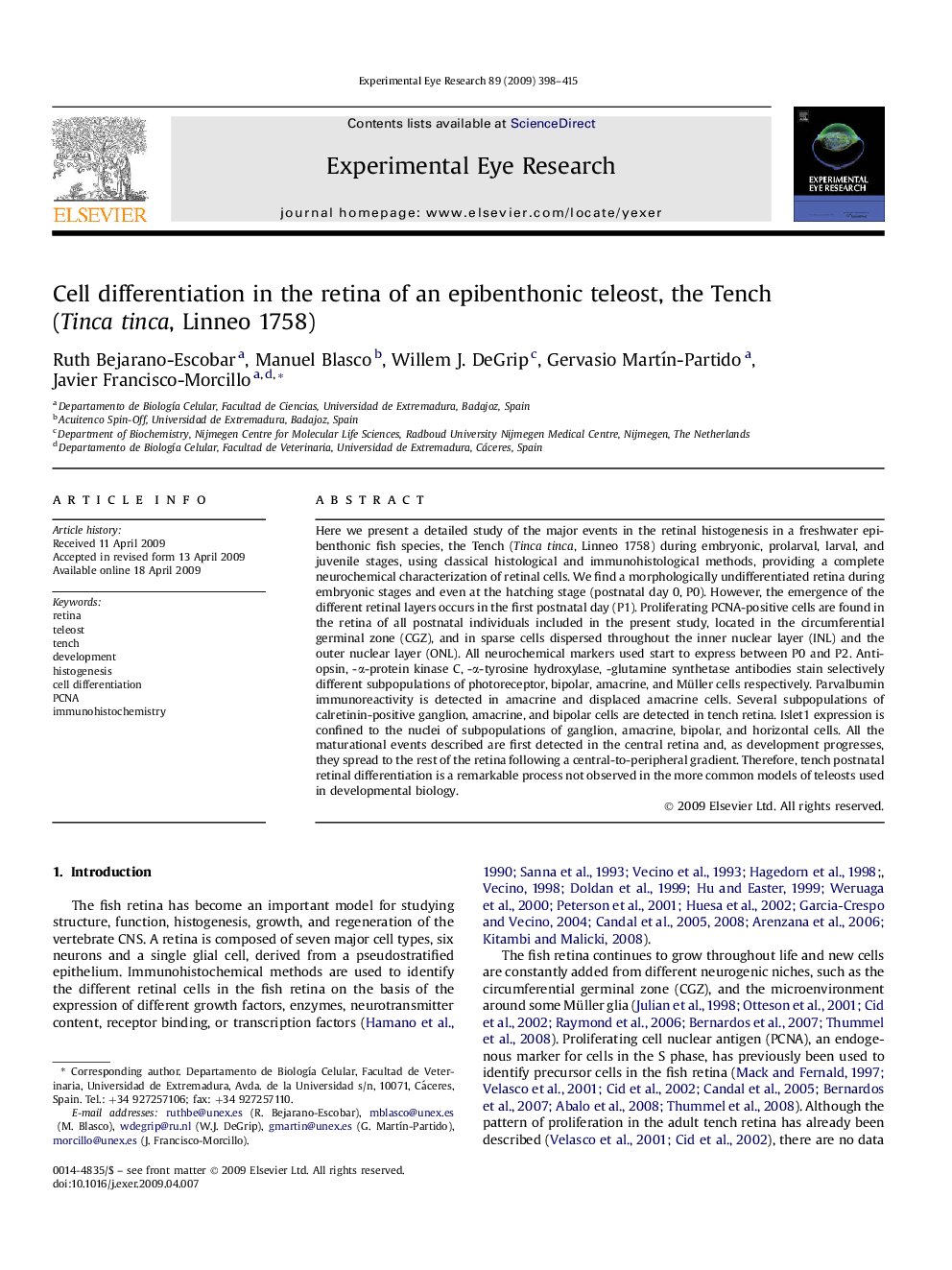| Article ID | Journal | Published Year | Pages | File Type |
|---|---|---|---|---|
| 4012378 | Experimental Eye Research | 2009 | 18 Pages |
Here we present a detailed study of the major events in the retinal histogenesis in a freshwater epibenthonic fish species, the Tench (Tinca tinca, Linneo 1758) during embryonic, prolarval, larval, and juvenile stages, using classical histological and immunohistological methods, providing a complete neurochemical characterization of retinal cells. We find a morphologically undifferentiated retina during embryonic stages and even at the hatching stage (postnatal day 0, P0). However, the emergence of the different retinal layers occurs in the first postnatal day (P1). Proliferating PCNA-positive cells are found in the retina of all postnatal individuals included in the present study, located in the circumferential germinal zone (CGZ), and in sparse cells dispersed throughout the inner nuclear layer (INL) and the outer nuclear layer (ONL). All neurochemical markers used start to express between P0 and P2. Anti-opsin, -α-protein kinase C, -α-tyrosine hydroxylase, -glutamine synthetase antibodies stain selectively different subpopulations of photoreceptor, bipolar, amacrine, and Müller cells respectively. Parvalbumin immunoreactivity is detected in amacrine and displaced amacrine cells. Several subpopulations of calretinin-positive ganglion, amacrine, and bipolar cells are detected in tench retina. Islet1 expression is confined to the nuclei of subpopulations of ganglion, amacrine, bipolar, and horizontal cells. All the maturational events described are first detected in the central retina and, as development progresses, they spread to the rest of the retina following a central-to-peripheral gradient. Therefore, tench postnatal retinal differentiation is a remarkable process not observed in the more common models of teleosts used in developmental biology.
